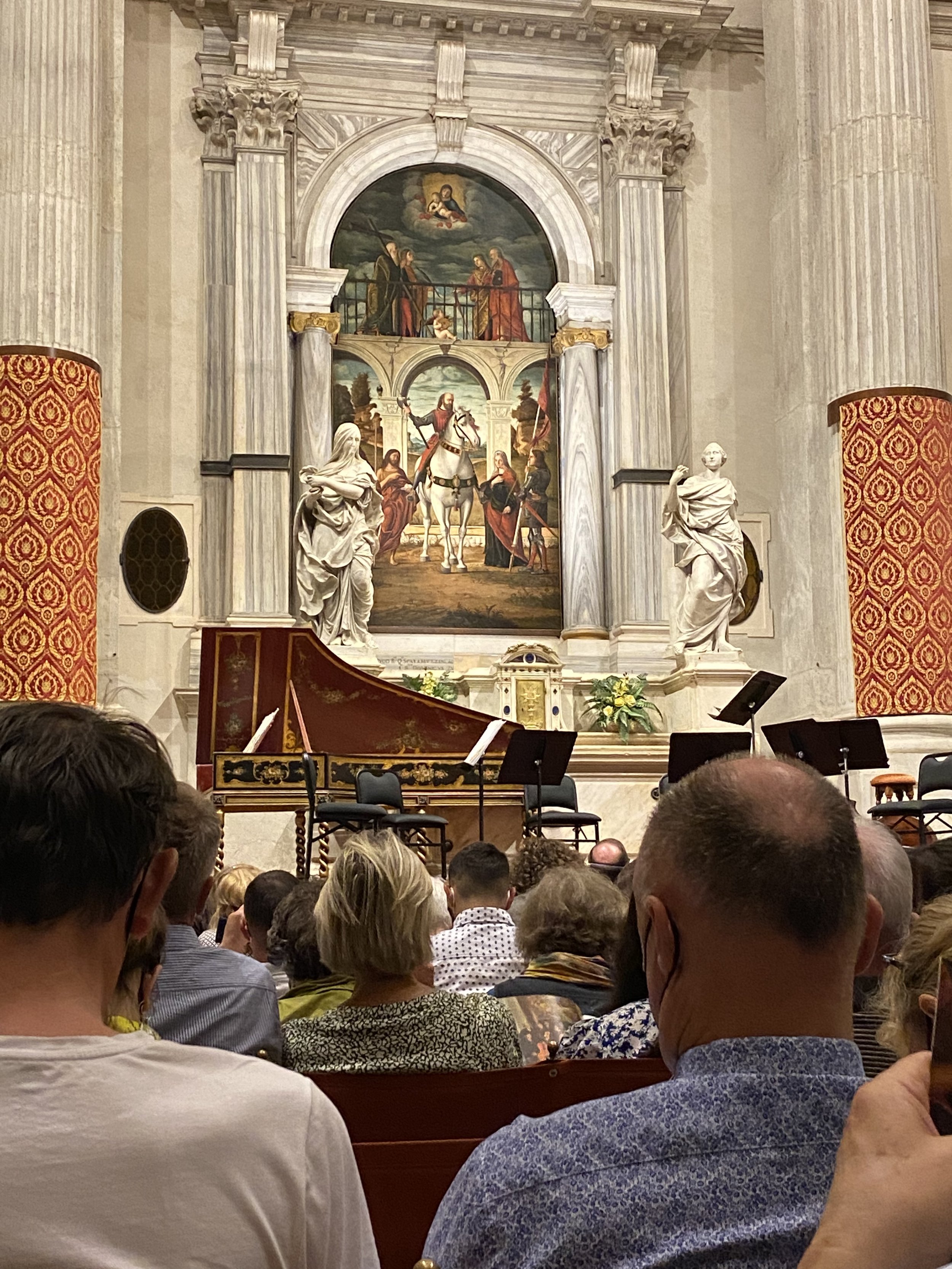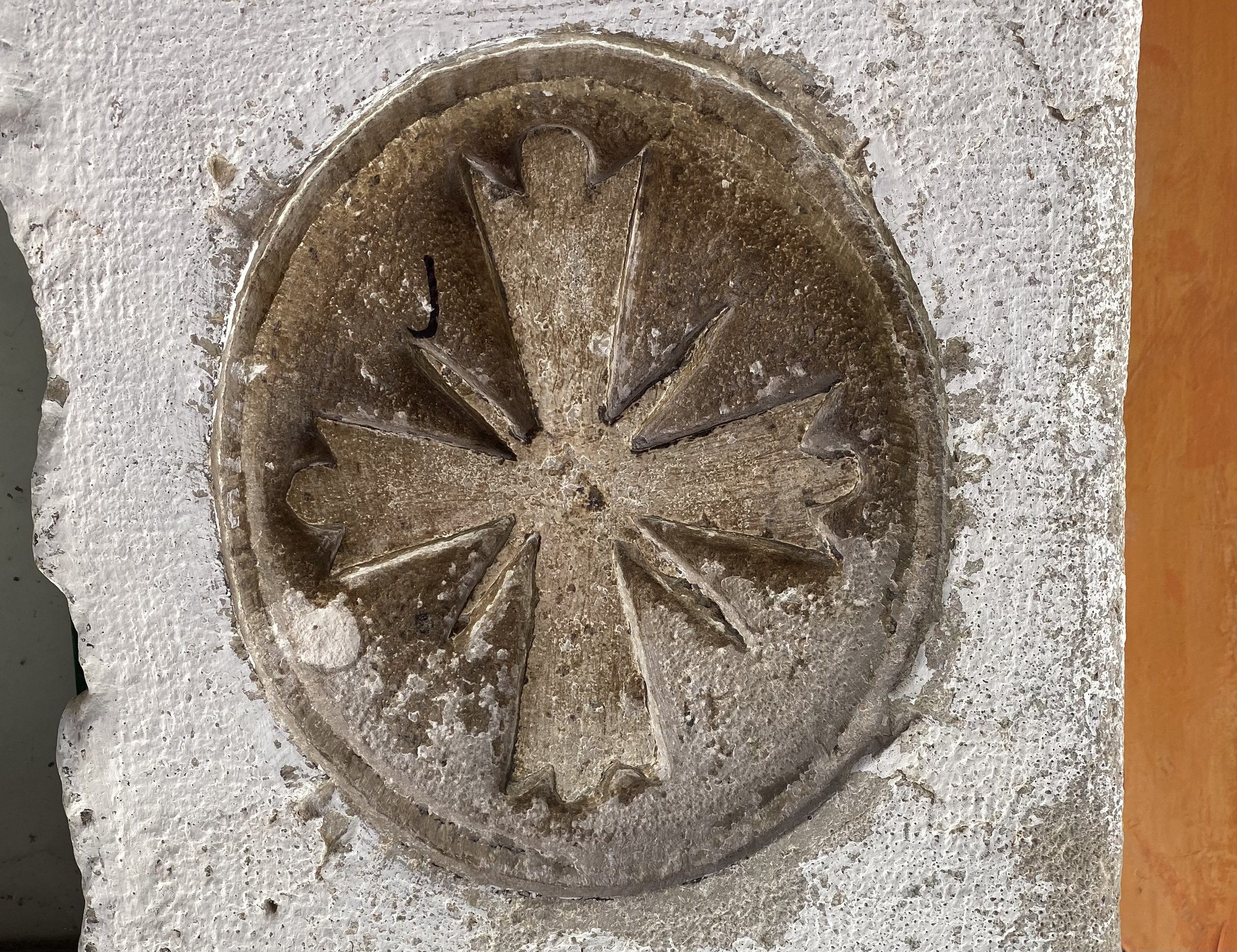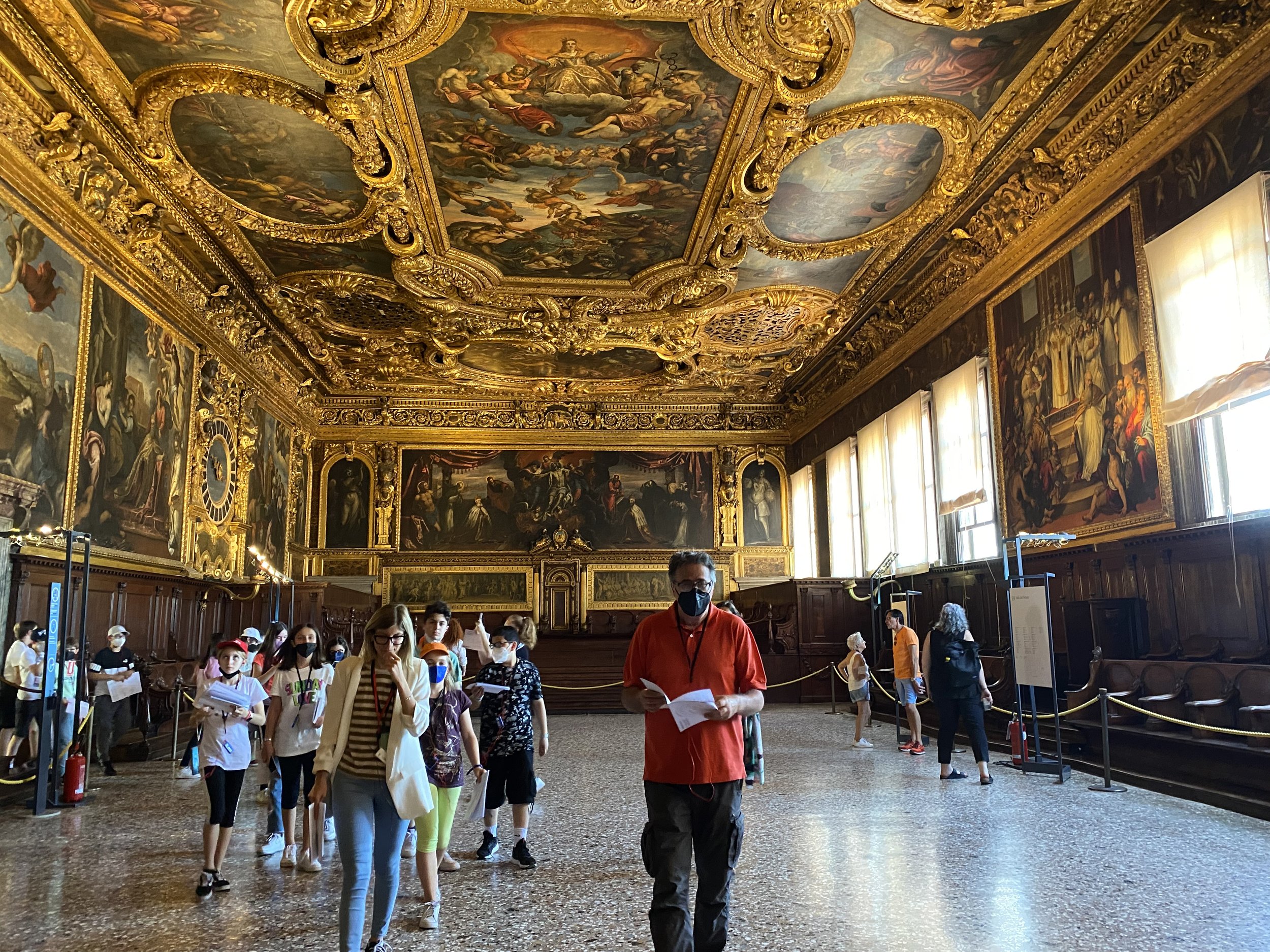Upon arriving to the Marco Polo airport on April 4th, 2022 I was greeted by Graziano Meneghin. He ushered me to the luggage retrieval area and helped me with my bags. I knew that navigating a new city with several pieces of luggage, would pose significant challenges for me. I had ticked the ‘disability’ box on my registration form for the 3 month academic residency I’d be attending. Accessing accommodation for disability related needs is always difficult for me. Graziano, a project coordinator with Ocean Space who had woken up at an ungodly hour to greet me at the airport, met my requests for support with kindness and respect. Little did I know that he would become so much more than a hospitable host and gracious helper. Graziano Meneghin: my translator, my coach in Venetian culture, my art and architecture historical tour guide, my intermediary between the Patriache, and my smoking buddy.
We boarded a beautiful wooden water taxi to begin our journey towards the City of Venice. Thoughts raced through my mind as the boat motored onwards… “this boat is amazing! Unlike any I’ve ever seen!” “I am so far from home” “Keju would be so happy to know I finally made it to Venice” “I wonder if we will be passing by the Salute”. And then I saw it: the dome of the Santa Maria Della Salute Basilica. She was in there. The painting that I had learned about almost two decades ago in Art History classes at NSCAD. The Greek name for her is Mesopanditissa, The Peacemaker. A painting known as The Black Madonna. She was waiting for my visit.
Growing up in Eskasoni, Nova Scotia I attended weekly mass. Like most other families in my home community, mine was Roman Catholic. As a child and into my early teens I was an altar server at the Eskasoni Holy Family Parish where iconic images of the Holy Family, including statues of Mary and St. Anne, are on display. Curious to know more about the histories taught in the Gospel, I sought out books on Christianity and was fascinated by the narratives I found. I was equally perplexed by what I did not find; Nowhere in these books was there mention of the nationality or ethnic origin of this holy family. I knew they were from Jerusalem, but at the time I did not even know where Jerusalem was.
I first learned about the Black Madonna paintings in my early twenties at the Nova Scotia College of Art and Design. In art history classes I learned that not all narratives presented throughout history were necessarily “the truth”. Professors dedicated to fostering critical discourse, encouraged us to question the retelling of histories as anecdotal, to consider perspectives of authorship and the broader sociopolitical contexts that the retelling of historical accounts existed within. What I discovered were stories. History - as documented memories of those who held publishing privilege. These narratives were much like breadcrumbs left behind for someone else to find. The crumbs had been picked up, investigated, then redescribed. Although most historical records claimed objectivity, subjectivity of individual interpretation was evident the closer I looked. I could clearly see rearrangements of found crumbs – often neatly swept into piles of convenience, categorized and disseminated within containers of Eurocentric order.
As I was washing dishes from supper one evening, about a month prior to my departure for Venice I heard a voice in my mind. The voice was comforting and familiar. A voice that I associated with home, my family, my community and the church. It was a voice I recognized as belonging to Sister Dorothy Moore - singing Ave Maria in L’nuisimk. I quickly wiped my hands on a tea towel and grabbed my phone to begin the search for its origin. And there it was, on the page of the Atlantic First Nation Help Desk under the Aboriginal Language Initiative in the Songs tab. Track 11 was Sister Dorothy’s voice singing Kulein Mali as translated by Pauline Bernard.
I once heard Elder Ernest Johnson speak about how L’nu names for our places we know to be land are always from the perspective of the water. We as L’nu have travelled these waters throughout Mi’kma’ki since time immemorial and have built relationship to land from that approach. The Oceans Fellowship was based around oceans and the relationships we have with them. So here I was, a Mi’kmaw woman flying across the ocean to Europe, arriving to land, subsequently boarding a boat to approach the island of Venice where I would need to make my dwelling for the next 3 months.
That moment in time also marked the difficult 2 years that the entire globe was forced into a situation where we were required to navigate a new world and reinvent what it meant to be in community. In order to try to maintain a sense of understanding of who I was and why I was there - within such a complex series of historical narratives, I had to dig deep into the mud to find my roots. The roots that would bring me to language, to song and to the old L’nu custom of emmitukwemk: The Visit.










